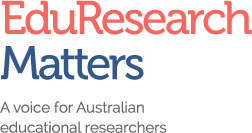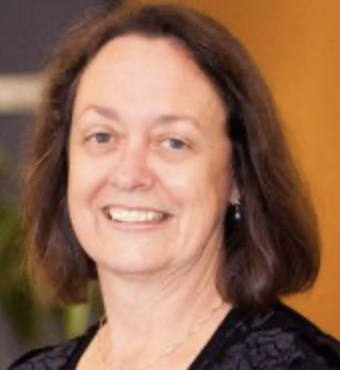This is the fourth day in a series of posts on AARE education priorities for the 2025 federal election. Today’s posts are about equity and educational outcomes.
Fifty years ago the federal Commission of Inquiry into Poverty published its main report – usually called the Henderson Report. At the time, some 17.5% of Australia’s children under the age of 15 were estimated to be living below the poverty line. In 2025 this figure has barely shifted. There are no official tallies of child poverty in Australia, but UNICEF, ACOSS, the Valuing Child Initiative, the Australia Institute and the Paul Ramsay Foundation and their various academic partners agree that the 2025 child poverty figure is still around 17%. Just as it was fifty years ago, about one in six children in Australia currently live in poverty. This is a national disgrace.
The reasons for the child poverty plateau are very complex. Ending poverty is not just about increasing family incomes, although that is crucial. It also involves a raft of changes across state and federal jurisdictions in health, housing, employment, welfare, transport and regional development, to name just some. Education, particularly schooling, is part of the problem. It is also part of the solution, as the Henderson Report made clear.
A significant and persistent gap
Of course, some things have changed in education since the Henderson Report and the subsequent Fitzgerald report (1976) on poverty and education. Take school retention.
A combination of factors, including the collapse of the youth labour market, public policies which made it difficult for young people to leave school early, the constructive efforts of educators, combined mean that more young people now stay at school for longer. Retention to Year 12 sat at around 35% in the late 1970s compared to around 80% now. But being at school for longer has not translated into better life chances for everyone. Australia has a significant and persistent gap in educational outcomes.
PISA results show that disadvantaged students are much more likely to lag behind their peers. Here, disadvantaged refers to students who are ‘low socioeconomic status’, located in regional and remote areas or are First Nations. Girls are also again falling behind their male peers in maths and science, according to the TIMMS tests. It is not surprising that in 2020, a Mitchell Institute report card on the agreed goals set out in the Mparntwe Declaration argued that gaps in achievement could largely be attributed to students’ postcodes and family resources.
Time to take a hard look at the problem
Given the enduring relationship between poverty, place, First Nations and schooling – these were the focus of some of the very first funded Commonwealth equity programmes – it is surely time for us to take a hard look at the problem. We need to step away from political arithmetic and federal-states horse-trading about the distribution of money and the establishment of performance frameworks. These are necessary but hardly sufficient to tackle a national schooling system which does very well for some children but not others. We need to focus directly on children in poverty and their schools.
But is any political party brave enough to put child poverty and schooling back on the agenda? Could we revisit Henderson? Should we have a fifty year anniversary stock-take of our successes and our ongoing problems? What if we had another review?
Towards a national review of child poverty and education
Let’s imagine that there is a 2025 review of poverty and schooling. Yes, it’s a stretch, but bear with me. My imaginary review terms of reference include the following seven points:
1. Poverty is concentrated in particular locations and schools.
Via the real estate market, school location is inseparable from neighbourhood concentrations of wealth and poverty and the associated uneven distribution of achievement. It is entirely different to be and work in a school where one in fifty children are living in poverty compared to being in a school where it is one in three. Or one in two. Wealth, educational success, life chances and geography are knotted together.
2. Context matters – school mix matters
No school serving a community left in poverty is exactly the same. Take the school serving a community made up largely of the working poor. Parents work multiple precarious jobs all hours of the day and night to put food on the table. Another school serves communities where combinations of public housing policy and private rental markets lead to high numbers of very recent refugees. How about the school in a regional town with a dwindling population where families who can afford to do so have their children board in town while the rest go local. Or the school in a public housing estate where a significant proportion of residents are dependent on income support. And so on. None of these schools are the same. “Thisness” matters.
3. Difficulty getting staff
Many schools serving communities in poverty have difficulty getting staff and the staff they do get are often highly mobile. Teacher shortages are not evenly distributed. “Are you going to be here next term Miss/Sir” is a question anyone who has worked in a school with staffing churn hates to hear. Staffing churn works strongly against improving student learning and well-being. Children living in poverty need sustained relationships with the very best teachers we have. But it seems that ensuring a well-qualified teacher for every child remains a pipe dream. Getting the right teachers to the right places at the right time is a crucial system task.
4. Schools serving communities left in poverty have to do more with less.
Schools in economically struggling neighbourhoods have less income – they can rarely ask their communities for additional money so they have to exist on their government allocation. They have the same time and staff budgets as their more comfortable counter-parts. Yet everyday they have to deal with more and more diverse and complex needs and issues.
5. Children need to be at school to learn
Getting students through the school gate is vital but not enough. Being an absent presence in class is not a substitute for being engaged. Finding ways to help children want to attend and participate in their learning is a necessary first step to closing the educational gap.
6. Children do not leave their problems at the school gate
Schools serving communities left in poverty need support from other public agencies. They have higher concentrations of troubled and troubling students. But their local and regional health, mental health, psychology and welfare services are often stretched thin, because they too are doing more than they are resourced to cover. And in rural and remote areas professional services are generally based far away and school needs do not always fit neatly with scheduled visits.
7. The best educational resources are teachers
The best educational resource that children and young people left in poverty have are their teachers. When they have time and are well supported teachers in disadvantaged schools can rise to the challenge. Knowledgeable teachers with rich pedagogical repertoires and the innovative practices they have quietly developed have made a difference in some schools in some places and at some times. These examples are a resource for systemic change. But this reservoir of skilled professional practice is rarely acknowledged. Teachers in schools serving communities left poor too often find themselves being told how to do their jobs by people who have never been in their shoes.
Policy amnesia rules – not OK
These are seven policy basics. These seven basics do not cover the full extent of what schools serving communities left poor have to overcome to make headway against the odds. They are only a beginning. Getting back to these policy basics is not making excuses for failure. To the contrary, they recognise everyday educational realities. And shamefully, these seven basics have largely slipped away from federal policies. Policy amnesia rules – not OK.
The fiftieth anniversary of the Henderson report is not only a time to remember. We are also well overdue for a rethink. We can begin by acknowledging that addressing child poverty means that some schools and their teachers must do ground-breaking work. And they need support.
So this is my challenge for those currently standing for election, an election where poverty seems to be off the agenda. We need a bold new vision for addressing the long tail of educational underachievement and child poverty. We need the courage and curiosity to inquire, to review, to face up to the equity challenge. One in six Australian children needs your commitment to do better.

Pat Thomson PhD PSM FAcSS(UK) is part time professor of education at the University of South Australia and the University of Nottingham. She was for twenty years a school leader of disadvantaged state schools in South Australia – she is a life member of the South Australian Secondary Principals Association. Her research and publications are directed to making schooling better for more children and young people: She focuses on school change, arts and creative education, alternative education and leaders’ work. She also publishes patter, a blog about academic writing. She is outraged that the issues addressed in her first academic book Schooling the rustbelt kids (2002) are still so pertinent.
















